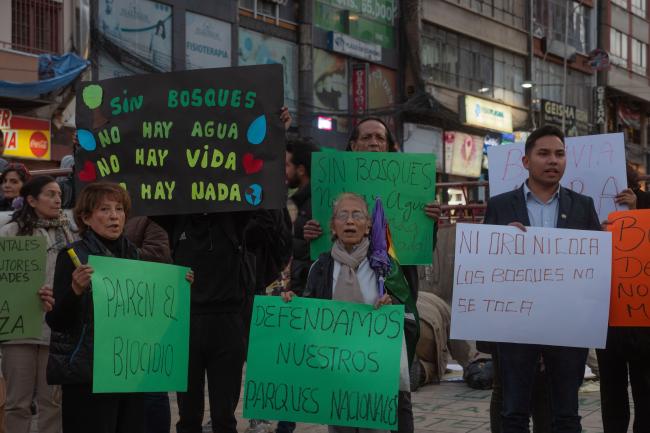
Leer este artículo en español.
In Asunción de Quiquibey, an Indigenous Mosetén community in Bolivia’s northeastern Beni department, wildfires burned out of control for months last year. Armed with shovels, tree branches, and two-liter plastic water bottles, community members did their best to keep the flames at bay as the fires slowly ravaged the cacao, papaya, and bananas that community members cultivate to survive.
Facing severe drought and no meaningful government support, there wasn’t much the community could do on its own. The Bolivian Armed Forces arrived to help for an afternoon, but lacking sufficient training and equipment, their efforts were unproductive. “We, just us as a community, have been fighting here and fighting there, with each community member defending their parcel of cacao,” former community leader and park ranger Hermindo Vies told me in late October. “It’s a curse,” he said, “this fire has ended it all.”
Meanwhile, on a hazy November evening in the administrative capital of La Paz, several dozen protestors gathered in a plaza near the city center. As the crowd grew, activists applied finishing touches to their signs, adding images of burning lungs and slogans like “ni oro, ni coca, el bosque no se toca” (neither gold nor coca, hands off the forests).
The protests responded to massive wildfires that swept the country between September and November last year, burning millions of acres of forest. Exacerbated by the El Niño phenomenon and climate change, 2023 was a year of record droughts, leading to wildfires engulfing both Amazonian and Andean cities in smoke for weeks at a time. In the first months of 2024, as South America continued to face unprecedented heat and drought, wildfires also struck Argentina, Chile, and Colombia.
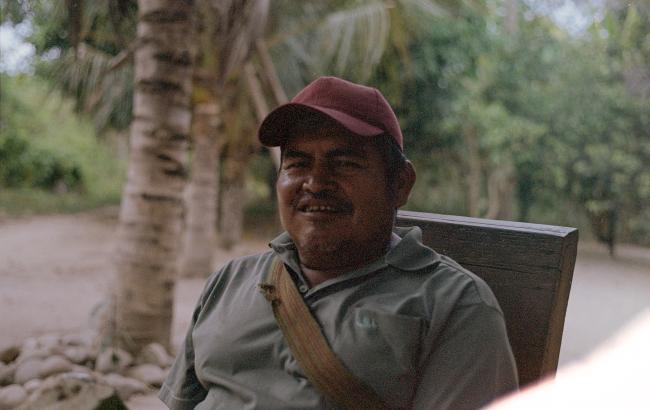
Though recent political changes have led to decreasing deforestation in neighboring Brazil, Bolivia’s expansion of soy, cattle, and timber accelerates unabated. In 2022, Bolivia ranked third worldwide for primary forest loss, after Brazil and the Democratic Republic of the Congo. At a gathering of Amazon country leaders last August, the Bolivian government again refused to commit to ending deforestation in the Amazon by 2030.
While protesters are right to mobilize against deforestation and raging fires, there is a disconnect in the environmental movement about the primary causes of deforestation—driven in large part by the country’s agro-industrial sector. A closer look at the actions and rhetoric of both the Bolivian government and private interests reveals the racist and capitalist foundations that shape much of the backlash against the fires. For example, some protestors have invoked the racist slogan “ni collas, ni coca, el bosque no se toca” to denounce the burning, with the term “collas” used in a derogatory manner to refer to highland Indigenous people that have migrated to the eastern lowlands in search of work. This brand of environmentalism fails to “consider environmental problems as structural issues closely related to class, race, and social injustices,” says Angélica Becerra, a member of the Santa Cruz-based activist group Mujeres, Territorios y Resistencias.
Chaqueo in Bolivia
Controlled seasonal wildfires are common across the tropics. The practice of clearing fields for planting during the dry season by setting fire to dead overgrowth has been employed around the world for millennia and is traditionally rotational, allowing time for recently cultivated soils to regain nutrients. Though its traditional form can be sustainable and healthy for forests, chaqueo, as the practice is known in Bolivia, has often been confused with “slash-and-burn” agriculture, or the use of fire to clear healthy standing forests for new cultivation.
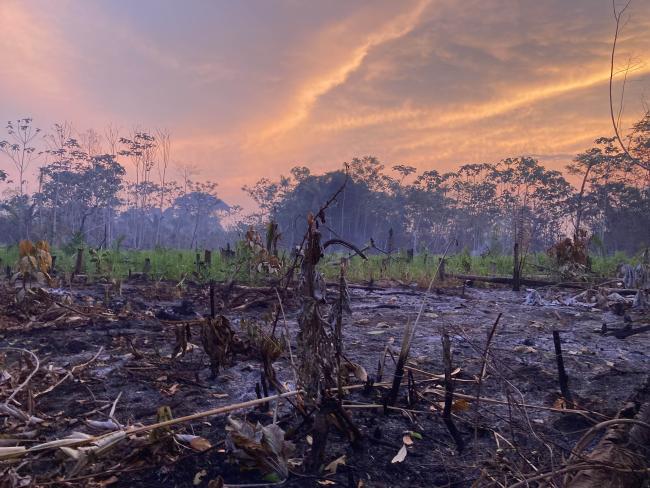
This has been the case in communities like Asunción de Quiquibey, located in the Pilón Lajas Biosphere Reserve. In contrast to large agro-industrial operations, members of Asunción de Quiquibey employ chaqueo through rotational cultivation of crops such as cacao, plantains, papaya, and rice. This sustainable planting method has been maligned around the world as “backward.” Nonetheless, in the context of severe drought, many of the fires started through small-scale chaqueo spread to the surrounding forest. Mega-fires are a post-2016 phenomenon, indicating that the combined forces of human-induced climate change and industrial agriculture are the primary culprits of uncontrollable burning.
In Bolivia, the state has long told Indigenous communities like Asunción de Quiquibey that they “need to preserve, need to preserve, need to preserve,” says Vies. But as a community that has always lived in the rainforest and employed sustainable burning practices, “how are we going to live if we only preserve without using the forest’s resources?” asks Vies.
Government discourses that place the responsibility for preservation on Indigenous communities stand in stark contrast to government policies that encourage the settlement of forested areas by agricultural producers, largely corporate soy farming and cattle ranching operations. These companies use fire to clear vast swathes of land, a practice that often surpasses legal limits with little government enforcement. As Amazonian regions experience the worst drought in decades, many of these fires inadvertently spread out of control.
Though the Bolivian government dispatched volunteer firefighters to the most affected regions and received limited international support, it was too little, too late. By November of last year, 6.7 million acres had been razed by wildfires. Most impacted communities, including Asunción de Quiquibey, have been largely forced to take their fates into their own hands. Last November, posters calling for donations to support local firefighting efforts were common throughout Bolivian cities and towns.
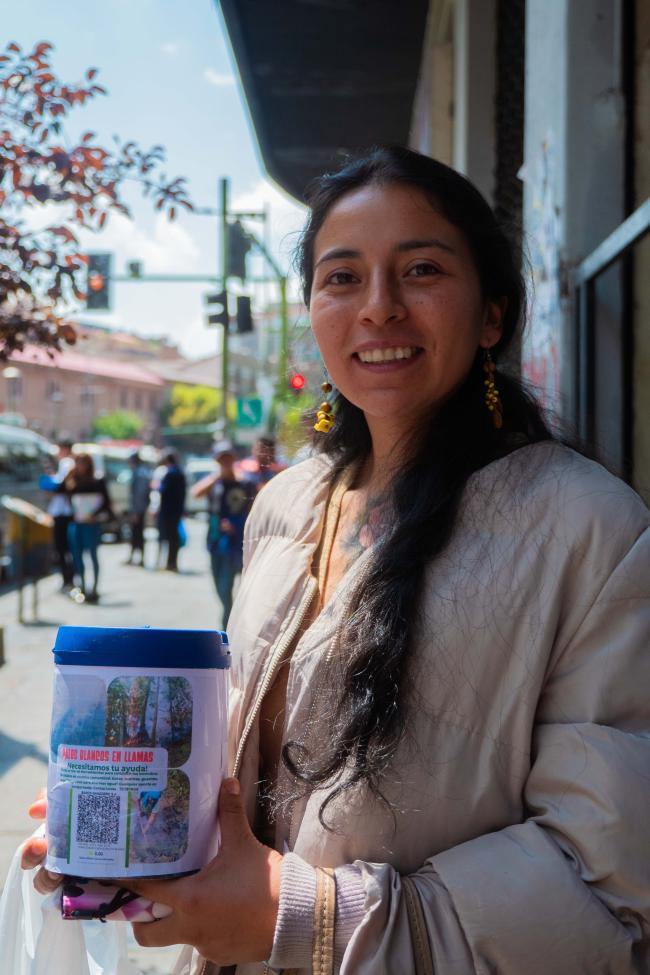
Social movements are right to condemn the tepid national and international response to the burning. According to Becerra, however, Bolivia’s environmental movement has been “coopted by the far-right.” The majority of those who attend environmental protests come from significant class and racial privilege, a position that often puts them at odds with the interests of the majority of Bolivia’s population. Becerra notes that many of those shaping the environmental discourse nationally also have business interests at stake. As such, “they’re proposing individualistic measures to combat climate change” and “depoliticizing the fight for life, water, and land,” she says. “This environmentalism only favors the local and global elites and doesn’t change the reality for people or the land.”
Global Systems of Consumption and Demand
Between 2001 and 2021, soy cultivation caused 222,400 acres of deforestation, and the beef industry is responsible for 35 percent of Bolivia’s total historical forest loss. The majority of this deforestation is driven by ever-increasing appetites for soy, beef, and wood in the Global North. In 2020, high-income countries consumed over 90 kg of meat per year per person, whereas lower-middle-income countries only consumed around 15 kg. In Bolivia, meat consumption is high for its category, approximately 75 kg per capita.
Illicit coca cultivation for cocaine production—not to be confused with legal coca production for human consumption of unprocessed leaves—is also a significant source of deforestation in sub-tropical areas. Just as with agribusiness and gold mining, illegal coca cultivation is largely driven by Global North demand: in 2020, North America and Western and Central Europe were responsible for a combined 51 percent of worldwide cocaine demand.
Similarly, industrial and informal artisanal gold mining contributes to deforestation. With recent peaks in gold prices driven by jewelry markets in wealthy countries and increasing demand for investment opportunities in emerging economies, gold mining has soared across Amazonian countries. Bolivia exported over $2.5 billion in gold in 2021.
Calls by environmental protestors often do little to diagnose the global capitalist systems driving ecological exploitation. Instead, they narrowly focus their blame on the Movement Towards Socialism’s (MAS) current government, as well as the administration of former MAS president Evo Morales.
This blame directed at the MAS is deserved, though not unique to these administrations. The governments of Luis Arce and Evo Morales have played a substantial role in facilitating deforestation, in large part through clientelist deals with agroindustry giants in the eastern Santa Cruz department. Both administrations have been criticized for preaching utopian environmental visions while at the same time expanding extractive activities to the detriment of the Amazon and other fragile ecosystems. Most recently, at the COP28 in Dubai, Bolivia’s vice president David Choquehuanca stressed the need for “saving Mother Earth and staving off the multiple crises which have been caused by neocolonial, capitalist, imperialist, patriarchal Western culture.” As he said this in early December, many fires continued to burn with minimal governmental firefighting support, and his government had still failed to declare a state of emergency.
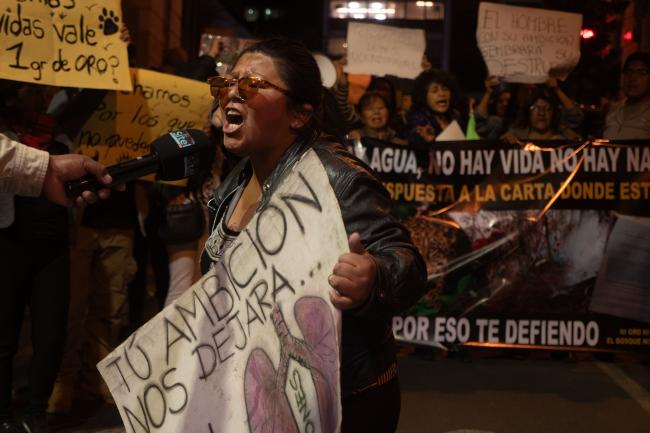
While of course, the Bolivian government should adopt more aggressive policies to curb deforestation and combat climate change, this is a responsibility of all governments—especially those with the greatest historical responsibility for climate change. Wealthy countries account for only 12 percent of the world’s current population, but are responsible for 50 percent of climate change-causing fossil fuel emissions.
Bolivia is part of a global climate, and it can’t address its climate-related disasters alone.
“They’re Coming to Invade Us”
One of the paradoxes of a portion of the environmental movement, similar to that of the United States and elsewhere, is that blame for ecological problems like wildfires is often placed on the poor, immigrants, or "outsiders" deemed to be a threat to nature. In Bolivia, this is expressed largely as a threat from migrants presumed to be coming to eastern Bolivia from the Andes, a presumption also laden with racial imaginaries pitting darker-skinned migrants against lighter-skinned eastern Bolivians. Implicit in the slogans and chants of environmental protesters is that the wildfires are the fault of individual cocaleros, small farmers, and artisanal gold miners, many of whom are Indigenous and concerned with simply making ends meet. “The slogans and posters revolve around protecting water and the land in a very global way,” says Becerra. “They’re looking at forests as virgin, clean, and pure beings without considering the interdependent relationships that humanity has with the forest and land.”
Calls for the removal of interculturales—typically Indigenous Andeans who have migrated to tropical areas to grow crops or mine gold—obscure the bigger problem of industrial agriculture, which is responsible for the majority of forest fires. And while Indigenous Bolivians are denounced for their contributions to forest loss, criticism of the role of Mennonites—who migrated to Latin America from Europe and North America in the mid-1900s—is rare. Mennonite communities in Bolivia are responsible for nearly 25 percent of soy plantation-related deforestation.
“It’s a very superficial, false discourse that they are using,” says Marie, another activist with Mujeres, Territorios y Resistencias who prefers to be identified by first name only. Many activists are broadly blaming “the Indigenous peoples of the lowlands”—which can refer to both interculturales and to communities like Asunción de Quiquibey—“without naming any of them, without knowing very well who we are referring to,” she notes, contributing to a “profoundly racist” discourse of “they’re coming to invade us.” While the simplicity of this rhetoric is appealing, it fails to “look closely at where the fires really come from.”
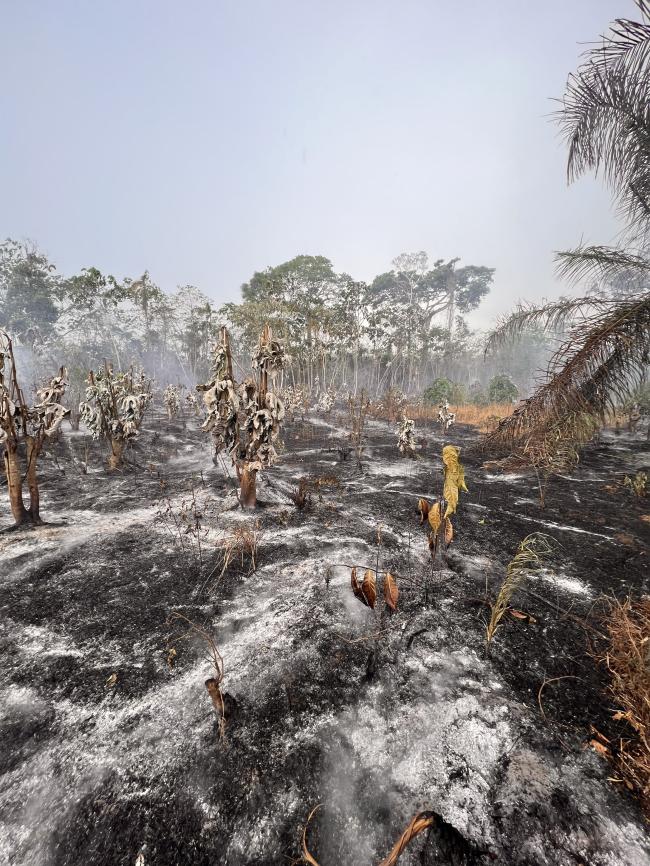
Indeed, this simplistic language is ultimately functional for conservative businesspeople and organizations that in some cases have attempted to coopt the environmental movement. Blaming poor and Indigenous people has the convenient effect of distracting attention from the industrial private sector by scapegoating small farmers. These same actors also have a history of harnessing fires for political gain. During the catastrophic fires in the tropical savannas of Bolivia’s Chiquitanía region in 2019, environmental nonprofits such as Ríos de Pie were formed with the clear ambition of weaponizing the fires against former president Morales, hoping to diminish his reelection chances. As anthropologist Andrés Huanca summarizes, big agroindustry has “used the environmentalist movement to increase their profit margins—is there any better portrait of contemporary capitalism?”
Towards a More Critical Approach
To be sure, not all environmental activists can be put into this basket. Some are pushing back on these contradictions to change the conversation. To form a more effective, just, and intersectional environmental movement, activist organizations such as Mujeres, Territorios y Resistencias are highlighting the narrow and classist vision encapsulated by “ni oro, ni coca, el bosque no se toca.” Instead, they’re replacing it with “ni soya, ni ganado, ni agroindustria” (neither soy, nor cattle, nor agroindustry). The fires Bolivia is facing, they say, should burn agribusiness and the extractivist capitalist model, not Bolivia’s forests.
“We don’t need this myopic, classist, fascist, and machista environmentalism,” says Becerra. Instead, “we need to imagine another environmentalism… with political objectives that consider inequality and capitalist, patriarchal, and colonial structures.”
Behind these political squabbles and scapegoating, the political, economic, and environmental forces that brought about this situation remain unchanged. Human-caused global warming is estimated to have elevated the probability of the 2023 Amazon drought by a factor of 30, and similar or worse droughts are likely to occur with increased frequency.
In Asunción de Quiquibey, the scars of fires remain. “All of the plots with [agricultural] production have burned,” says Hermindo Vies, who estimates that 50 to 70 acres of agricultural land and 25,000 to 37,000 acres of forest were lost in his community alone.
Though a Bolivian law guarantees compensation for land and structures lost in wildfires, authorities have yet to even assess the damage in the village. “We know that from here on out there won’t be money, there won’t be cassava, there won’t be rice, there won’t be anything. We’re going to suffer this whole year, and from now on going forward."
Benjamin Swift is a writer, filmmaker, and podcast producer currently based in La Paz, Bolivia. His stories focus on global human rights, the environment and climate change, and LGBTQIA+ themes. He is the co-host and co-creator of the podcast People Place Power.
Laura Barriga Dávalos is a photographer, visual artist, and researcher based in La Paz, Bolivia. She is currently working on her first solo exhibition based on long-term research with potter artists in Bolivia's Chaco region.

